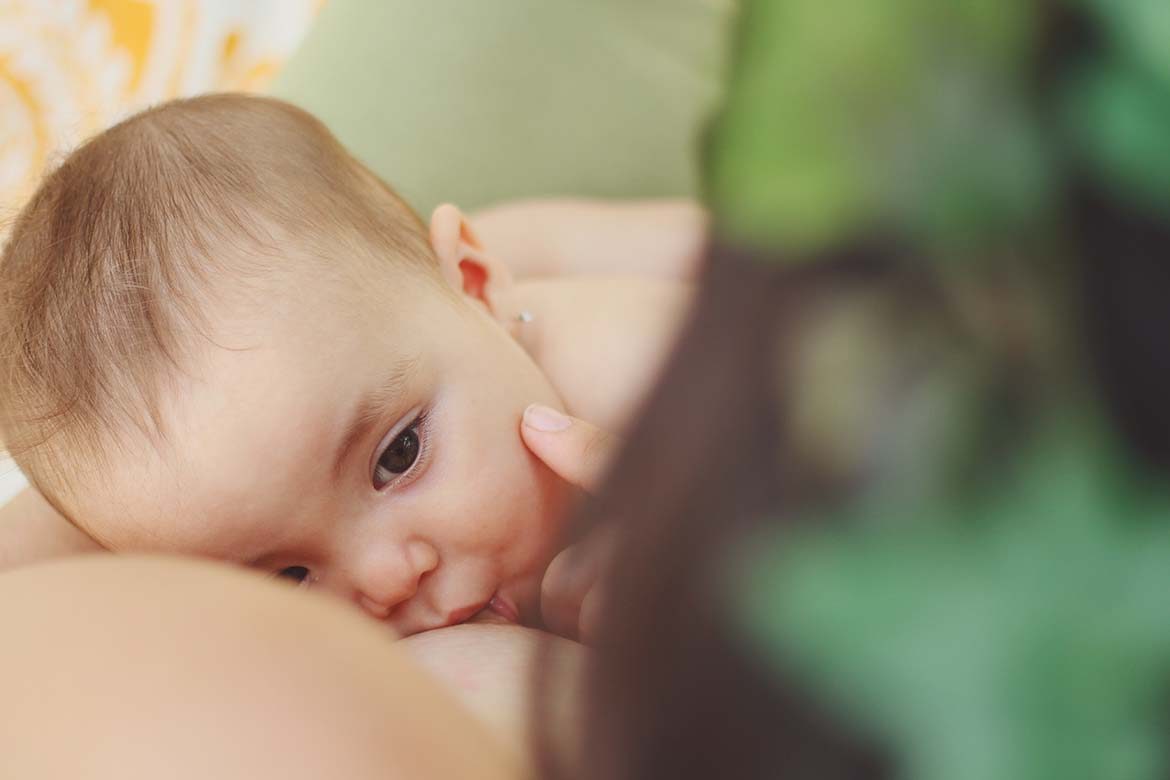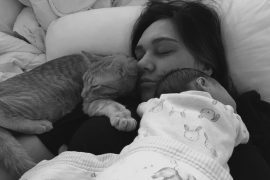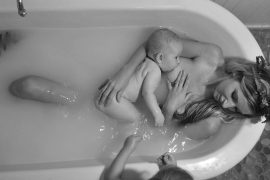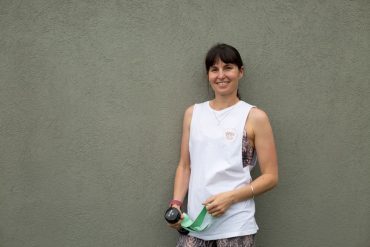By Hannah Schenker
Nipple pain is one of the main reasons women stop breastfeeding, and it’s understandable why – it hurts! According to La Leche League, studies have shown that 80-90% of women experience some pain and discomfort when breastfeeding, with 26% of them going on to experience cracking and extreme pain. Many women assume this is inevitable when it comes to breastfeeding but lactation experts say it can point to an underlying problem, and isn’t normal. However, there is a difference between transient pain and more extreme pain that requires attention and the help of a professional. Transient pain is generally experienced at the beginning of the breastfeeding journey, usually during the first latching on and feeds. The baby’s suck is extremely powerful, so for sensitive nipples this takes some getting used to.
Transient pain:
- Latch-on pain that usually lasts about 30 seconds into feeding, but not longer as has partly to do with milk coming down and starting to flow freely. This pain does not continue on during the rest of the feeding, or between feeds. For some this is more a mild discomfort and for others is quite painful.
- Pain usually reaches a peak about 3 days after birth and then dissipates, leaving completely within about 2 weeks.
- Skin is not damaged – the nipple looks the same before and after feeding. No cracks, blisters or bleeding, and not flattened or pinched looking.
If you experience the following, you need to seek professional assistance from a Lactation Consultant:
- Intense, excruciating pain.
- Pain that carries on through the entire feeding.
- Pain that carries on between feeds.
- Pain that lasts beyond the first couple of weeks.
- Skin damage – cracks, blisters, bleeding.
If you are experiencing that amount of pain, trust your instincts and seek help.
One of the main causes of nipple pain is the latch, which can take a bit of time to get right. A baby has already been working on their sucking reflex in the womb but it’s not as simple as just getting that suck on your nipple and away you go. Incorrect positioning can create suction “trauma” as too little or too much of the nipple and areolar tissue gets sucked deep into baby’s mouth. If baby is positioned well and latched properly, this tenderness will ease after a few days. However, if it feels as if your nipple is about to burst into flames or fall off altogether, the latch may need investigating and this involves both the position of the nipple in the mouth as well as the positioning of baby’s body. You will know if the latch isn’t right, so listen to your instincts even if someone is standing there telling you the latch “looks fine”.
Other causes of nipple pain that need investigating if the pain won’t quit:
- Thrush/yeast infection
Burning, itching, tingling nipples and occasionally a shooting pain into the breast. This tends to come on quickly and all of a sudden after pain-free breastfeeding, as nipples become infected with bacteria and microorganisms. The yeast infection can also be living in baby’s mouth. - Tongue-tie
Tongue and lip ties are often un-diagnosed or mis-diagnosed. A baby with a tongue tie is not able to lift their tongue or move it forward properly which means some can’t get the milk from the breast normally. They tend to push the nipple up with the tongue, pressing it into the hard palate as they suck which causes pain and damage. An unusual shaped palate or short tongue can have the same effect. If baby can’t stick their tongue past their bottom lip or lift their tongue to the roof of their mouth when crying, then they may have a tongue tie. However, just because your baby has a tongue tie does not mean they cannot breastfeed – it’s a complicated business, so check with a lactation specialist who knows what they are talking about. - Dermatitis/eczema
Skin conditions like this can be confused with thrush so make sure you see a professional. Allergic reactions can be stimulated from reactions to shampoos, laundry detergent, soaps, etc. - Mastitis/plugged duct
Pain, pain, pain (you can read one mother’s experience here). Symptoms can be flu-like with fever, chills and body aches as well as well as a hard lump or painful area on the breast. This infection needs treatment so seek help from a Doctor. - Raynaud’s syndrome
This is when the nipple turns white to blue or red after feeding and it takes a while for the blood to come back in, called a vasospasm. Correcting the latch does not help as it has to do with temperature and blood flow. A warm shower or compress will often help with this. - Milk blister
A little white, clear or yellow bubble or blister on the nipple or areola which of course causes pain while feeding. It is actually a little bit of milk beneath the skin, and again can be relieved with warm compresses. - Engorged breasts
This is when the breasts are so full of milk they become hard and tight and the nipple flatten out, difficult for baby to grasp. Expressing, massage and heat can all help with this before feeding, so baby gets a good latch on the nipple.
Mothers, breastfeeding isn’t supposed to hurt. You are the only one who can gauge the level of your pain, so listen to your body and if it doesn’t feel right, speak up. If you don’t feel heard, speak to someone else. A breastfeeding specialist is a great place to start, as they know all the possible problems and issues and should be a wonderful listening ear, really hearing your concerns. Breastfeeding is not black and white, it’s not a “one size fits all” experience, and you know your body the best. It might help you to read up on some of the above conditions and take that information with you. There will be a solution, so do not despair.
Hannah Schenker is a freelance writer, editor and regular contributor to The Natural Parent Magazine. She lives with a touch of magic in Golden Bay, New Zealand.












Use the warm air from a portable hair dryer after nursing and often during the day., The very sore nipples will feel better in about 24 hours. Sheila Kippley, author of The Seven Standards of Ecological Breastfeeding for natural birth spacing.
Thanks Sheila! We will check out your book.
I m pregnant of 7 month… And I m also breastfeeding my 13 month old baby due to this I feel very strong sensation in my nipples …wht to do can anyone tell me
I m having one month old baby while feed her I felt pain in my right side Nipple what can I do for that
Hi Vijay,
You might want to contact the writer directly by visiting their website – available at the end of the article. Or contact your local Lactaction Consultant or midwife. Best wishes.
Apply nipples care cream for 2 to 3 times..it will get cure